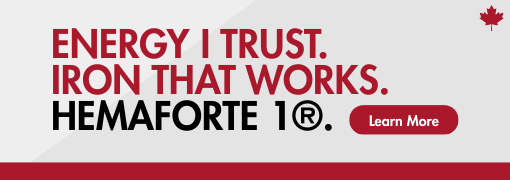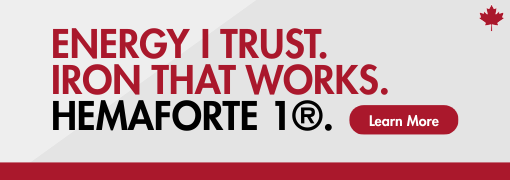The Facts
Sleep apnea is a condition in which disturbed breathing interrupts sleep. Obstructive sleep apnea (OSA), the most common type of sleep apnea, affects approximately 15% to 30% of men and 10% to 15% of women in Canada.
Most people suffering from sleep apnea also snore, but there's a big difference between the two conditions. While snoring can be annoying, sleep apnea can be life-threatening. During an apnea episode, the body's oxygen levels can drop noticeably, carbon dioxide builds up, and the heart has to work harder to cope. Each time it happens, the brain sends a wake-up signal so that the person can breathe, and this means never getting a good night's sleep.
Untreated sleep apnea can cause dangerous daytime sleepiness as well as contribute to a higher risk of high blood pressure, stroke, and heart attack.
Causes
There are 3 types of sleep apnea:
Obstructive sleep apnea (OSA), the most common type, happens when air cannot get into the lungs because the upper airway has collapsed. It's more common in men and in people who are overweight, especially those who sleep on their backs. In people of normal weight who have the condition, there's often an abnormality in the lower face, such as having a small chin, an overbite, or a large tongue. OSA typically has three phases:
- First, the airway is partly blocked as the soft tissue at the back of the throat relaxes and starts to close up, causing very loud snoring.
- Eventually, the airway collapses and airflow through it either stops totally or is significantly diminished for at least 10 seconds and up to 2 minutes.
- Finally, the sufferer wakes up briefly (although they are rarely aware of it), and often snorts or gasps for air. Once a breath is taken, the person falls back asleep and the cycle repeats itself.
Central sleep apnea, which is quite rare, results when the brain fails to send normal signals to the chest to breathe properly while asleep. Neurologic disease (i.e., disease of the brain) and severe heart disease can cause central sleep apnea, as can certain medications (especially strong pain medications like morphine and other narcotics).
Mixed sleep apnea, as the name suggests, is a combination of the first two types. It always starts out as central sleep apnea, and then turns into OSA.
Symptoms and Complications
Unfortunately, most people with sleep apnea don't even know they have it. An estimated 25% of Canadian adults are at high risk for having or developing sleep apnea. The following questions may help you find out if you have sleep apnea:
- Are you a loud, habitual snorer?
- Do you feel tired and groggy when you wake up?
- Are you often sleepy during the day?
- Are you overweight?
- Are you known to choke, gasp, or hold your breath while asleep? (You may want to ask your partner about this.)
Daytime sleepiness is probably the most important symptom that people notice, since it can make it hard to stay awake, concentrate, and work. People can even end up losing their jobs if they're always nodding off during the day. An especially dangerous problem is drowsiness while driving or operating machinery. People with sleep apnea get into more accidents than average. It's best for people with sleep apnea to avoid driving if they feel sleepy, or to stop driving completely until their condition is under control.
Sleep apnea can also lead to headaches, memory problems, and depression. In severe cases, complications including high blood pressure, heart attacks, strokes, and abnormalities in heart function, such as heart failure and arrhythmias (irregular heartbeat), can develop or worsen due to sleep apnea.
Making the Diagnosis
A doctor will ask more detailed questions to find out whether someone has the symptoms of sleep apnea and will examine them physically to see what might be blocking the airway. Routine blood tests, blood pressure readings, and examinations of the heart might be done to see if there are physical complications from sleep apnea or to rule out other possible conditions.
To confirm that the condition is sleep apnea, a test called polysomnography may be done. For this test, a variety of measurements are taken while the person sleeps in a specialized sleep laboratory. Some people can have their sleep study done at home instead of in the laboratory, though this might not be as accurate.
Treatment and Prevention
Several treatments have been found to be successful, alone or in combination:
- lifestyle changes – These can help eliminate factors that cause or aggravate sleep apnea. If the condition is related to obesity, losing weight can often solve the problem. Sleeping on your side, quitting smoking, and avoiding alcohol and tranquilizers (which can worsen snoring and interfere with control of breathing) all help to control sleep apnea.
- continuous positive airway pressure (CPAP) – A special close-fitting mask is worn over the nose and provides a constant airflow from a small machine to the upper airway, supporting and holding it open. So far, this is the most successful treatment for sleep apnea, no matter what the cause, often making a noticeable difference after only 1 or 2 nights.
- dental appliances – These can be worn at night to stop the throat from closing up or the tongue from falling back, keeping the airway open. These are useful for OSA, especially when it is mild or when there is a snoring tendency without sleep apnea.
- medications – Some medications, such as modafinil and solriamfetol, can help with excessive sleepiness caused by obstructive sleep apnea. However, these medications may not be recommended for those with heart or mental health problems. Medications can also be used to treat the underlying conditions that are causing central sleep apnea.
- surgery – Head or neck surgery is often used to relieve sleep apnea when there are enlarged tonsils (tonsillectomy) or a blockage of the upper airway. In another common procedure called uvulopalatopharyngoplasty, excess soft tissue is removed to clear the airway. This procedure seems to be helpful for people who have mild sleep apnea. A maxillomandibular advancement (MMA) is a procedure that may be helpful for people with abnormal jaw structures.
All material copyright MediResource Inc. 1996 – 2025. Terms and conditions of use. The contents herein are for informational purposes only. Always seek the advice of your physician or other qualified health provider with any questions you may have regarding a medical condition. Source: www.medbroadcast.com/condition/getcondition/Sleep-Apnea


